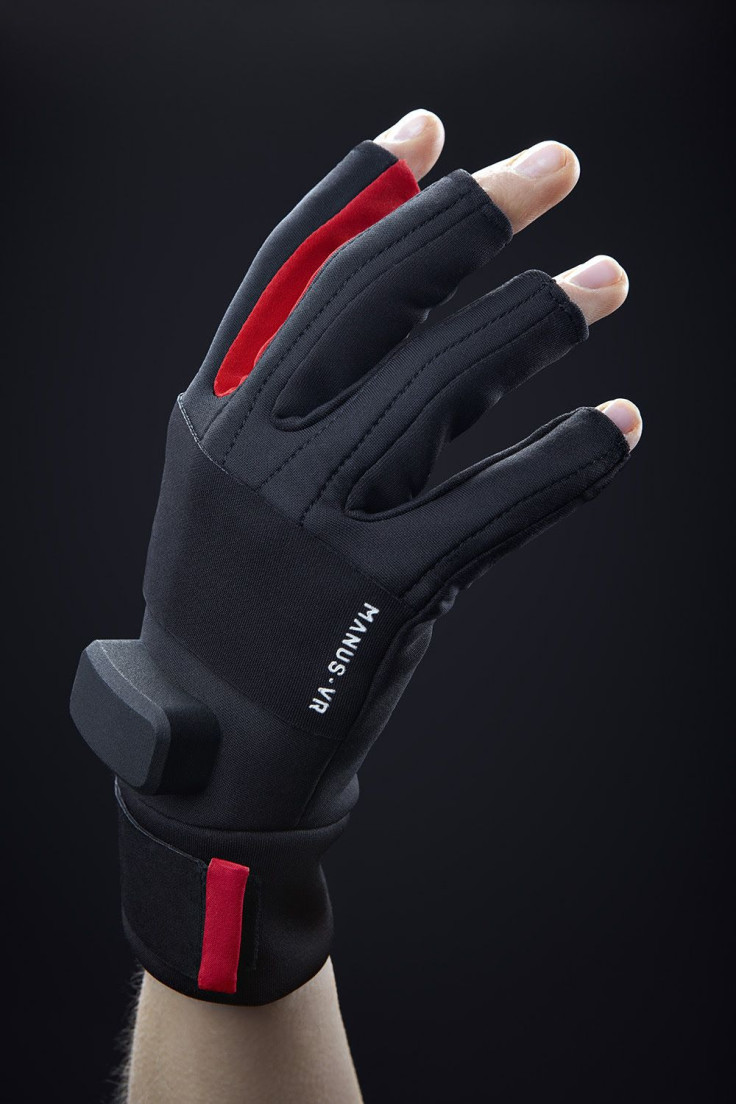At GDC 2016 a crowded convention is awash in virtual reality headsets, but one company is here to focus on a different VR bodypart - hands. Manus VR, a Dutch company, specializes in physical gloves worn during VR sessions that let players “feel” the digital world around them. A pair of gloves with sensors built into the fabric provide virtual hands for an audience that might not know they’re missing them.
“Virtual reality is a very new field and data gloves for consumers are completely new,” said Stijn Stumpel, lead designer at Manus VR. “We’re the first company to do that.”
Each glove can communicate with the motion tracking hardware for a VR system, so no additional sensor setup is required. The GDC 2016 demo runs on Vive, but Stumpel assured me that Manus VR is dedicated to becoming a standard peripheral across all platforms. The biggest advantage Stumpel believes Manus has over competing hand tracking solutions, like Nimble VR and Leap Motion , is that Manus delivers a hardware-based solution.
“Leap Motion, Nimble VR, they can be unreliable. Inconsistent,” said Stumpel. “There’s a lot of viewing angle issues with those products.” He explained that it’s easy for software to lose track of hands when reaching behind the head to throw a ball, for example.
“There’s also the latency issue … since we have physical sensors instead of analyzing visual images we have very low latency,” he said.
The demo Manus prepared for GDC hopes to showcase this advantage. Players experienced Pillow’s Willow , a VR puzzle game where players guide a little girl named Pillow across a series of obstacles. Each obstacle required a solution that displayed the tactile range of Manus VR.
It began with players plucking fireflies out of the air and placing them in lanterns to light a path. Next, a ruined staircase required assembly so players must pick up pieces of debris and stack them like Legos to lead Pillow to the next area. A whack-a-mole style obstacle occurs next, followed by a musical puzzle ala Simon where players follow a melody on a keyboard.
I ran through the demo myself, and found most of it to be intuitive and natural. Stacking the staircase pieces got a bit disorienting, as did the course itself which runs in a circle around players. Spinning in VR while wires dangle and tangle can be a jarring design flaw. But catching fireflies, which are delicate by nature, felt at home in the VR world where weight isn’t a factor (yet).
Currently, the biggest problem working against Manus VR seems to be support from developers. Most games aren’t built with sophisticated hand dexterity in mind, so even if players use Manus gloves in a compatible game their avatar’s hands won't have articulating fingers, for example. But Stumpel said Manus is committed to spreading the word.
“We need to learn a lot from them but they need to learn a lot from us on what a good game for a data glove is,” said Stumpel. “We learn a lot from what those game developers do so we can recommend best practices for making good Manus gloves games.”
Manus VR gloves are currently available for pre-order for $250 with a plan to ship in Q3 2016. While the gloves do work with Oculus as well, HTC provided Vives for the GDC 2016 showcase. In addition, Manus VR pre-orders include a plastic wrist mount designed specifically for the HTC Vive.


















